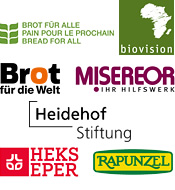Women in Agriculture
The industrialisation of agriculture falls mainly within typically male areas of decision-making, including the economic risks involved. These areas include the competitive use of machinery, agrochemicals and high-breeding plant varieties; the cultivation of cash crops and the breeding of large livestock for supra-regional markets. Men’s involvement in these often risky activities have in the past decades brought about ruin for many farmers, forcing them to migrate to the slums of the cities and causing many to commit suicide out of desperation. Women in contrast tend to be more cooperative and cautious, and try to minimise risks in food production, processing and supply, and they opt for social self-help and preventive health care. Men’s forms of farming practice geared toward national and international markets therefore often undermine female domains and competences. Women frequently provide their families with food, from diversified cultivation of vegetables, fruits, tubers and herbs in their gardens, as well as from the rearing of small livestock."Small-scale farmers, particularly women, play a key role in promoting sustainable methods of farming based on traditional knowledge and practices. Women often possess knowledge of the value and use of local plant and animal resources for nutrition, health and income in their roles as family caretakers, plant gatherers, home gardeners, herbalists, seed custodians and informal plant breeders. Moreover, women often experiment with and adapt indigenous species and thus become experts in plant genetic resources." (Synthesis, p. 78)
Female innovation
These kind of simplistic characterisations do no justice to the complex gender relationships that differ according to region, history and culture. However, they show some basic lines of future development, in which the IAASTD recognises maybe the biggest potential for innovation in order to achieve its goals of sustainability and development. The chances of escaping hunger and misery disproportionately increase if women become empowered in small-scale agriculture and regional development systems oriented primarily towards local markets and supply, and where agricultural production of export and non-food crops is only a secondary possibility to achieve additional income. The FAO estimates that women comprise, on average, 43% of the agricultural labour force in developing countries. If they had equal access to productive resources, they could increase yields on their farms by 20 to 30%.
Worldwide, women are impressively demonstrating that they are willing and able to use their qualifications and growing self-determination in order to directly increase social prosperity and to preserve natural resources."Microfinance reaches over 10 million members of savings and credit groups in the region, nearly 90% of whom are women. (...) The rise of women’s Self-Help Groups (SHGs) or women’s microcredit and microfinance groups, in India and other East and South Asia and Pacific countries, has made women's income a permanent component of household income and weakened patriarchal gender relations, reducing women’s dependency on the male provider. (...) In India, SHGs have gone beyond savings and individual loans to take up management of community-based projects - contracting to construct minor irrigation works or undertake soil conservation. Unlike men’s groups doing the same tasks, they have saved considerable amounts of capital and used their savings to invest in tractors and other forms of mechanization." (East and South Asia and the Pacific, p. 181)The clear message of the IAASTD that women can make the decisive difference was not a new insight back in 2008. However, in contrast to other messages, it fell on fertile ground. The World Bank, the FAO and public and private development organisations, but also a growing number of governments and institutions, have today taken up the issue of gender mainstreaming in all of their programmes and activities. Even though successes in this area are being obtained at a snail's pace, they can be observed in many regions of the world.






